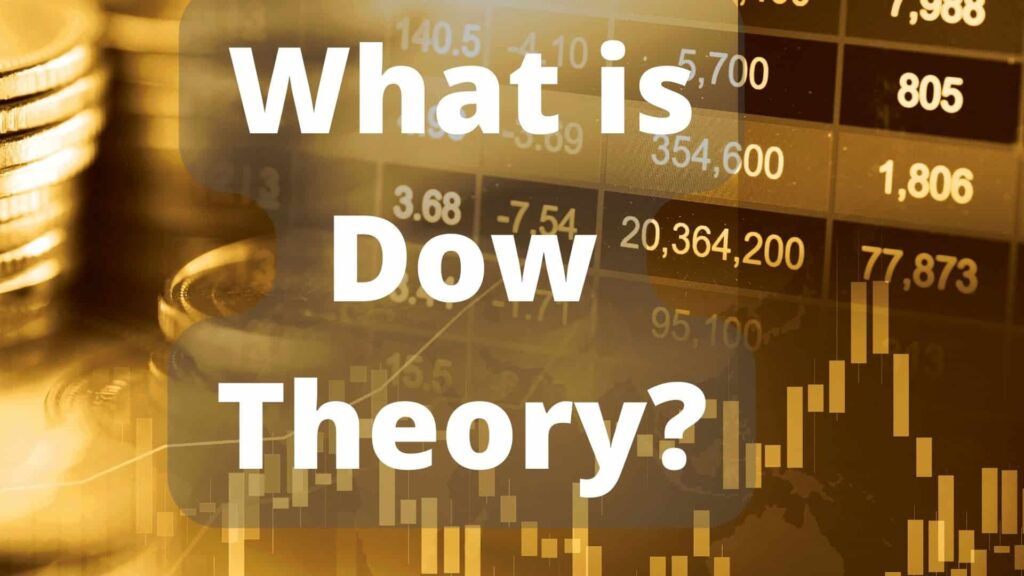What is Dow Theory and its principles?
Dow theory is an opinion that argues that the direction of the market can be predicted in the long run by looking at the existing price movements of the market. Dow theory pioneered the development of the concept of technical analysis. In this article, you can find the answer to the question of what is Dow theory and its principles.
What is Dow Theory?
Dow Theory is a technical analysis approach that was developed by Charles Dow, who is considered to be the father of modern technical analysis. It is based on the idea that the stock market reflects all available information, and that trends can be identified and predicted by analyzing market movements.
In Dow theory, it is believed that the market reflects all the emotions, thoughts and actions of investors. This idea, combined with the idea that the market repeats itself at regular intervals, suggests that future price movements can be predicted by looking at current movements in the market.
Dow theory classifies the movements in the market in three different ways. These movements are daily movements and long-term 4-year movements. Examining some market movements that repeat in certain time intervals is one of the elements that form the basis of the dow theory.
How Did the Dow Theory Emerge?
The Dow Theory is a method of analyzing and interpreting the stock market, and it is widely considered to be the foundation of technical analysis. It was developed by Charles Dow, the co-founder of Dow Jones & Company, in the late 19th century.
Charles Dow was a financial journalist who founded the Wall Street Journal in 1889. He created the Dow Jones Industrial Average (DJIA) in 1896, which tracked the performance of 12 major American companies. Dow also created the Dow Jones Transportation Average in 1884, which tracked the performance of railroad companies.
Dow’s analysis of the stock market was based on the idea that the market reflects the overall health of the economy. He believed that by studying the movements of the DJIA and the transportation average, he could predict the direction of the economy and the stock market.
In 1900, Dow’s colleague William Hamilton expanded on his ideas and developed what is now known as the Dow Theory. Hamilton wrote a series of articles for the Wall Street Journal outlining the theory and its key principles. These principles included the idea that the market moves in trends, and that these trends are made up of three phases: accumulation, public participation, and distribution.
The Dow Theory also emphasized the importance of analyzing the overall market rather than individual stocks. Hamilton believed that the movements of the market as a whole provided more reliable information than the movements of individual stocks.
The Dow Theory has since become a cornerstone of technical analysis, and its principles are still used by traders and investors today. It is considered to be one of the most important contributions to the field of financial analysis, and it has had a significant impact on the development of modern finance.
What are the Basic Principles of Dow Theory?
The Dow Theory is based on six basic principles:
- The market discounts everything: The current price of a stock reflects all available information, including economic and political events.
- The market moves in trends: The stock market tends to move in a series of trends, including primary, secondary, and minor trends.
- The market trends have three phases: Each market trend has three phases – accumulation, public participation, and distribution.
- The major trend is the most important: The major trend is the primary trend, and it is the most important trend to follow.
- Volume should confirm the trend: Volume is an important indicator of market trends, and it should confirm the direction of the trend.
- The trend is in effect until it reverses: The trend will continue until there is a clear reversal.
These principles can be used to interpret market movements in the light of dow theory.
The market reflects everything.
According to this principle, the current state of the market or the value of a financial asset reflects all instant or potential feelings, judgments and news about that asset. The news spread among investors is expected to influence the decisions of other investors. Whether this news is positive or negative is expected to affect price movements. Accordingly, everything that is within the knowledge of investors is reflected by the market.
There are three main trends that affect market movements.
These trends are; main trend, secondary trend and tertiary trends. Major trend one refers to the fundamental movements that the trendtakes from one year to several years. Secondary trend refers to trends that start from three weeks and last up to several months. The tertiary trend includes movements that usually last less than six days and are expected to last for a maximum of several weeks.
Major trends consist of three phases.
These stages are; the accumulation stage, the ascent or decline stage, and the distribution stage. Based on the bull market, the accumulation phase is a period in which the market still has not fully recovered. Therefore, it can be said that the confidence of the investors in the market has not fully recovered. In the accumulation phase, it is seen that the foresighted investors start to invest. Some investors start to make investments by predicting that the market will rise in the future.
The second phase, which can be called the ascent or the decline, is the period when economic conditions begin to improve visibly. Other investors in the market are also starting to trade and the trading volume is increasing.
The last stage, the distribution stage, is the period when the market is most positive. Everyone, including pessimistic investors, has a thought that prices will rise. Investors who have invested in the first stage start selling their share holdings.
The indices should confirm each other.
According to this principle, indices in different markets must confirm each other in order for a new trend to occur. Dow used the examples of the Dow Jones Transportation Index and the Dow Jones Industrial Average to illustrate this principle. Accordingly, if the transport market is in good shape, the industrial market is expected to be good as well.
Trading volume should confirm the trend.
According to this principle, while prices move according to an existing trend, there should be a change in transaction volume accordingly. According to Dow, if trading volume is low when prices are increasing, or trading volume is increasing when prices are decreasing, a change in that trend can be expected.
Trend continues until a definitive reversal comes about
According to this principle, a new trend must be confirmed in order for an existing trend to change and a new trend to be confirmed.
Conclusion
The Dow Theory is the foundation of technical analysis, and it is used to analyze the stock market to predict future price movements. By understanding the principles of the Dow Theory, traders and investors can make informed decisions about when to buy and sell stocks.
We remind our users to carry out the necessary examination and research within the scope of risk management principles, to act in accordance with their own risk-return levels and to use the methods they prefer.



